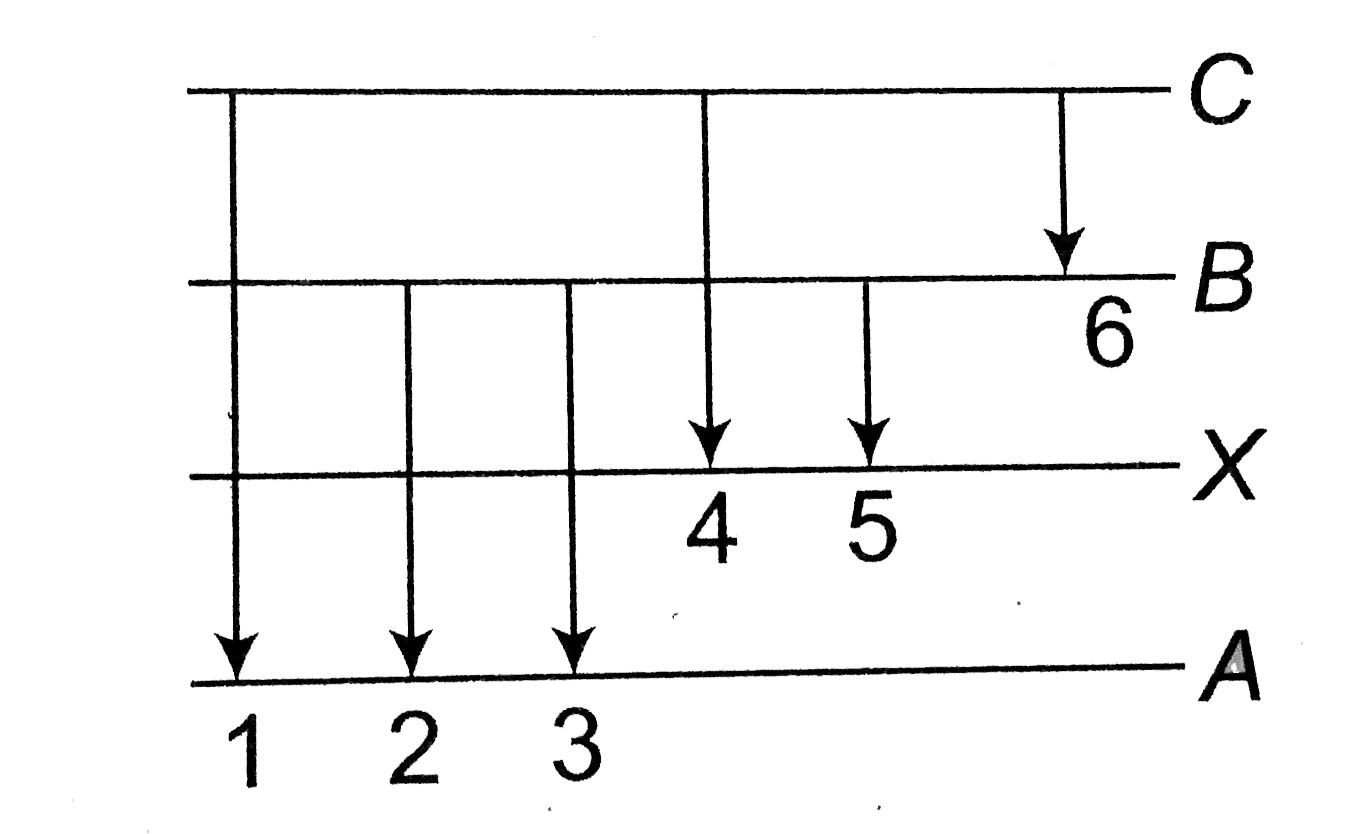(i) How emission spectrum are produced ?
Text Solution
(i) Incandescent solid, liquid or gas.
|
Similar Questions
Knowledge Check
In the figure six lines of emission spectrum are shown. Which of them will be absent in the absorption spectrum.
 A1,2,3B1,4,6C4,5,6D1,2,3,4,5,6
A1,2,3B1,4,6C4,5,6D1,2,3,4,5,6Assertion: Hydrogen atom consists of anly one electron but its emission spectrum has may lines.
Reason: Only Lyman series is found in the absorption spectrum of hydrogen atom whereas in the emission spectrum, all the series are found.AIf both assertion and reason are true and reason is the correct explanation of assertion.BIf both assertion and reason are true but reason is not the correct explanation of assertion.CIf assertion is true but reason is false.DIf assertion is false but reason is true.Assertion: Hydrogen atom consists of anly one electron but its emission spectrum has may lines.
Reason: Only Lyman series is found in the absorption spectrum of hydrogen atom whereas in the emission spectrum, all the series are found.Aif both assertion and reason are true and reason is the correct explanation of assertion.Bif both assertion and reason are true but reason is not the correct explanation of assertion.Cif assertion is true but reason is false.Dif both assertion and reason are false.
When is Hα line of the emission spectrum of hydgrogen atom obtained?
View SolutionAssertion: It is essential that all the lines available in the emission spectrum will also be available in the absorption spectrum.
Reason: The spectrum of hydrogen atom is only absorption spectrum.
View SolutionAssertion: It is essential that all the lines available in the emission spectrum will also be available in the absorption spectrum.
Reason: The spectrum of hydrogen atom is only absorption spectrum.
View SolutionHow many spectral series appear in the emission spectrum of atomic hydrogen?
View SolutionAssertion: It is essential that all the lines available in the emission spectrum will also be available in the absorption spectrum.
Reason: The spectrum of hydrogen atom is only absorption spectrum.
View Solution
